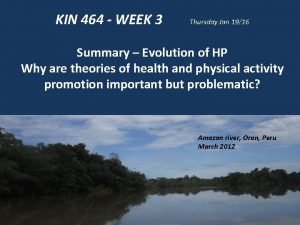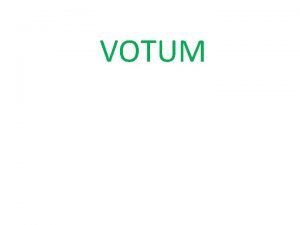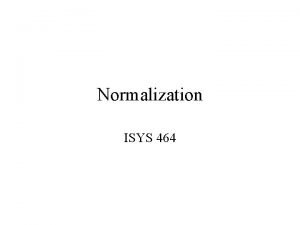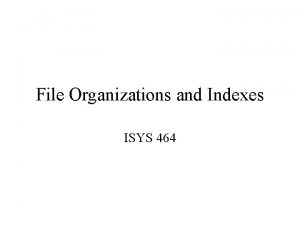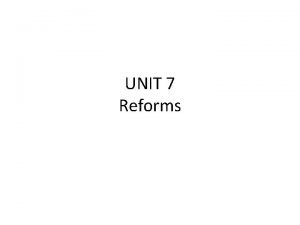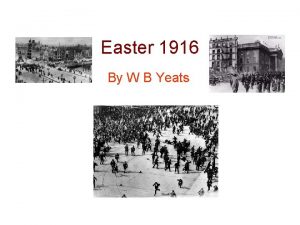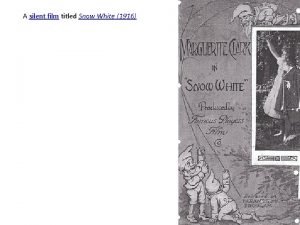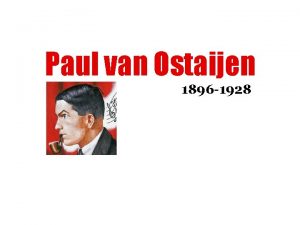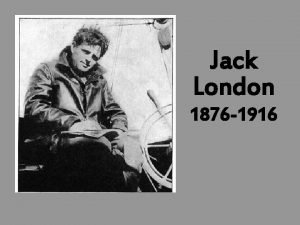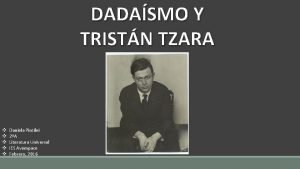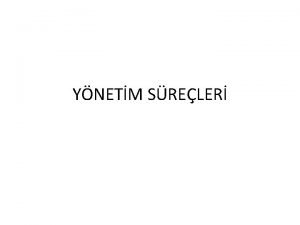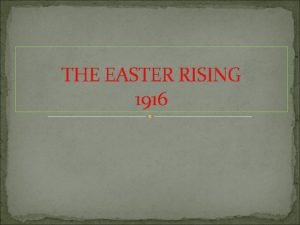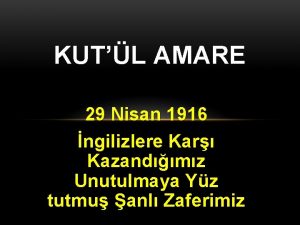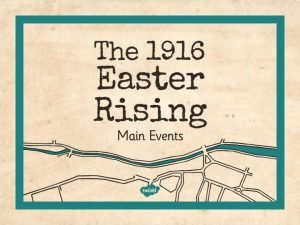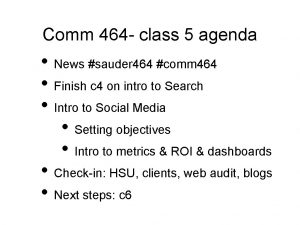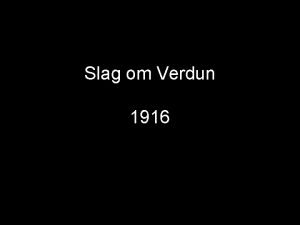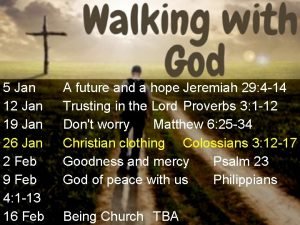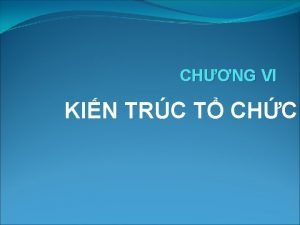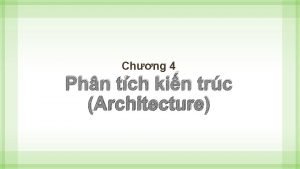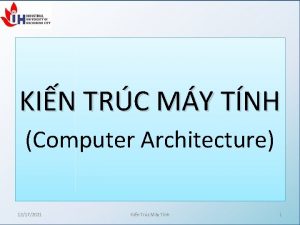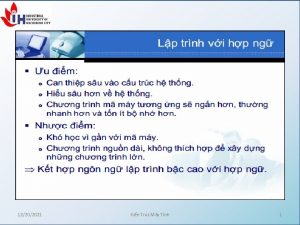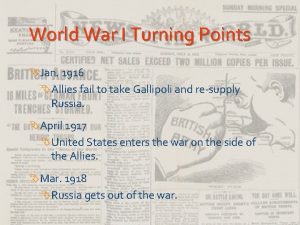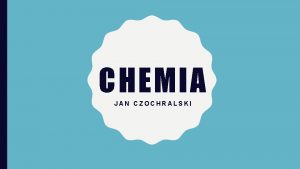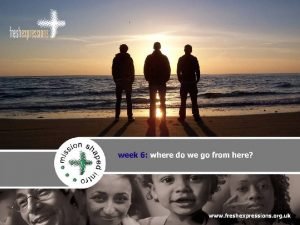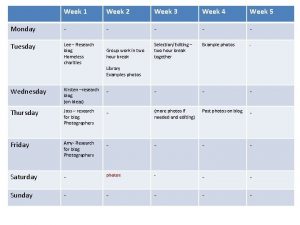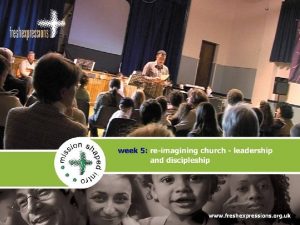KIN 464 WEEK 3 Thursday Jan 1916 Summary




























- Slides: 28

KIN 464 - WEEK 3 Thursday Jan 19/16 Summary – Evolution of HP Why are theories of health and physical activity promotion important but problematic? Amazon river, Oran, Peru March 2012

Evolution of Health Promotion in Canada O’Neill et al. , 2012 What was unique about Era 1? Era 2? What were the significant change drivers in development of health promotion in Canada over the first two eras? Era 1 Predominant Approach Health Education Years Prior to 1974 2 Health Promotion Development 1974 -1994 3 Population Health 1994 -2007 4 Population Health Promotion 2007 - Present Another interesting perspective: Raphael, D. (2008). Grasping at straws: a recent history of health promotion in Canada. Critical Public Health, 18(4), 483 -495.

Era 2: Health Promotion Development A new perspective on the health of Canadians. Lalonde Report Epp, J. (1986). Achieving health for all: a framework for health promotion. Ottawa, ON: Health and Welfare Canada. Retrieved from Health Canada website: http: //www. hc-sc. gc. ca/hcssss/pubs/system-regime/1986 -frame-planpromotion/index-eng. php

Healthy Cities Projects Towards making every city a healthy city (WHO, 2012) Six Characteristics: 1 2 3 4 5 6

Evolution of Health Promotion in Canada O’Neill et al. , 2012 What was unique about Era 3? Era 4? What were the significant change drivers in development of health promotion in Canada over the last two eras? Era 1 Predominant Approach Health Education Years Prior to 1974 2 Health Promotion Development 1974 -1994 3 Population Health 1994 -2007 4 Population Health Promotion 2007 - Present Another interesting perspective: Raphael, D. (2008). Grasping at straws: a recent history of health promotion in Canada. Critical Public Health, 18(4), 483 -495.

Compare and contrast: • Biomedical model of health • Biopsychosocial model of health According to the ancient Greek Physiocratic school of thought “health and disease cannot be dissociated from particular physical and social environments nor from human behavior” (Tountas, 2009).

Theories, Models, Frameworks • Theory – “A theory is a set of interrelated concepts, definitions, and propositions that presents a systematic view of events or situations by specifying relations among variables in order to explain and predict the events of the situations” (Kerlinger, 1986 as sited in Glanz, Lewis & Rimer, 2002 p. 25). • Model – “Models may draw on a number of theories to help understand a particular problem in a certain setting or context” (National Cancer Institute, 2005). • Framework – guides the practical implementation of theories and models. Outlines the fundamental structure of how the concepts, principles, and strategies are applied in order to guide planning, action and evaluation.

What is health promotion theory? • A systematic way of understanding health-related events and situations (NCI, 2005). • A tool to think with (Dorothy Smith, formerly in Sociology at UBC). “Theory helps me think through how and why I approach a health problem the way I do. ” (Health Educator, NCI, 2005)

Benefits of HP Theory • Moves beyond intuition • Encourages us to look at the bigger picture – a roadmap for studying complex health problems • Usually have some evidence behind them • Helps to identify what indicators should be monitored • Increases possibility of http: //www. cancer. gov/cancertopics/ca success ncerlibrary/theory. pdf

Application of theory to practice… • no ‘right’ or ‘wrong’ • ‘guidelines’ for understanding change & developing programs/HP initiatives Theories should never be applied without a thorough understanding of the individuals, groups, organizations and communities you are working with: • lived experiences • local context • asset-focused Ohprs. ca

health promotion models and frameworks Complexity combining theories Theories explaining: health behaviour 1. 1. health behaviour change in individuals change in communities 2. 2. change in communities change in 3. 3. change in organizations healthy public policy 4. 4. healthy public policy development

A Social-Ecological Model for Physical Activity – Adapted from Heise, Ellsberg & Gottemoeller (1999)

One Example of a Ecological Perspective (NCI, 2005) Ecological Level Definition Intrapersonal Individual characteristics influence behaviour – knowledge, attitudes, beliefs, personality traits Interpersonal influences – family, friends, peers; social identity, support and role definition Community Level Rules, regulations, internal policies, informal structures that constrain or promote behaviours • Institutional level • Community factors Social networks and norms, standards of behaviour among individuals, groups, organizations. • Public policy Local, provincial, federal policies and laws that regulate or support healthy actions and practices

Summary of HP Theories (NCI, 2005) Ecological Level Individual Theory/Model Focus Health Belief Model Perceived benefits of avoiding a threat Stages of Change Model An individuals motivation and readiness to change a problem behavior Theory of Planned Behavior Attitudes, perceptions of norms, beliefs about difficulty of changing Precaution Adoption Process Also a stage theory - how Model individuals move from being unaware to deciding about whether or not to act.

Health Belief Model • In the 1950 s the famous Health Belief Model, the first of a long series of theoretical models of individual health behavior, was conceived at Johns Hopkins School of Hygiene and Public Health in Baltimore.

Assesses AKA: The Transtheoretical Model readiness to Prochaska & Di. Clemente change Commonly applied to interventions targeting health behaviour change The dominant model of health behaviour change?

A Social-Ecological Model for Physical Activity – Adapted from Heise, Ellsberg & Gottemoeller (1999)

Interpersonal & Community Level HP Theories Ecological Level Interpersonal Community Theory/Model Focus Social Cognitive Theory Personal and environmental factors exert pressure on one another Community Organization Community-driven approaches to assessing and solving health problems Diffusion of Innovations How new HP practices spread from one community to another Communication Theory How different types of communication affect health behavior

Diffusion of Innovation Theory • innovators (the source of the innovation) • early adopters (“first on the block”) • early majority • late majority • laggards

Applying theory – increasing Physical Activity Stages of Change Model Diffusion of Innovation Theory 1. 2. 3.

Social Capital • Bowling Alone: America's Declining Social Capital. Robert D. Putnam • (2000) • Better together http: //www. bettertogether. org/socialcapital. htm

Summary of HP Theories con’t Ecological Level Societal Theory/Model/Framework Social Determinants Population Health Promotion

Community Health Promotion Socio-ecological Societal Community Family & Friends Individual Settings

Settings Approach • Comprehensive school health www. dashbc. ca Directorate of Agencies for School Health in British Columbia (DASH BC) Torabi & Yang, 2000 www. cash-aces. ca Canadian Association for School Health (CASH)

Target Population Approach • Government Assisted Refugees – Settlement support services – Wrap around support is needed

Issue Approach Surrey’s Safe & Active Schools Program: - Built environment improvements: side walks, cross walks, traffic calming, curb extensions - Parent, student and teacher education: reflective clothing, awareness, student pick up/drop off, safe routes - Group support: walking groups, school challenges - Enforcement: parking, speeding

Approaches to Targeted Health Promotion Initiatives: - setting - population - issue

• Healthy Communities Framework http: //www. ohcc-ccso. ca/en/webfm_send/550
 Kin 464
Kin 464 Kin 464
Kin 464 Week by week plans for documenting children's development
Week by week plans for documenting children's development Wees stil voor het aangezicht
Wees stil voor het aangezicht O heer my god lied 464
O heer my god lied 464 Mil std 464
Mil std 464 Isys 464
Isys 464 Se464
Se464 Isys 464
Isys 464 Alur sertifikasi halal
Alur sertifikasi halal Sql certification microsoft
Sql certification microsoft B logic isys
B logic isys Isys 464
Isys 464 Cse 464
Cse 464 Happy easter 1916
Happy easter 1916 1916 lucknow pact
1916 lucknow pact Objectives of khilafat movement
Objectives of khilafat movement Surrealismo 1916
Surrealismo 1916 September 1916 yeats
September 1916 yeats Saussure 1916
Saussure 1916 Snow white silent film
Snow white silent film Từ cuối năm 1916 đức áo thun
Từ cuối năm 1916 đức áo thun Oscar jespers
Oscar jespers John griffith london
John griffith london Biografia de tristan tzara
Biografia de tristan tzara Fayol 1916
Fayol 1916 Easter sunday 1916
Easter sunday 1916 29 nisan 1916
29 nisan 1916 Main events of 1916 rising
Main events of 1916 rising

